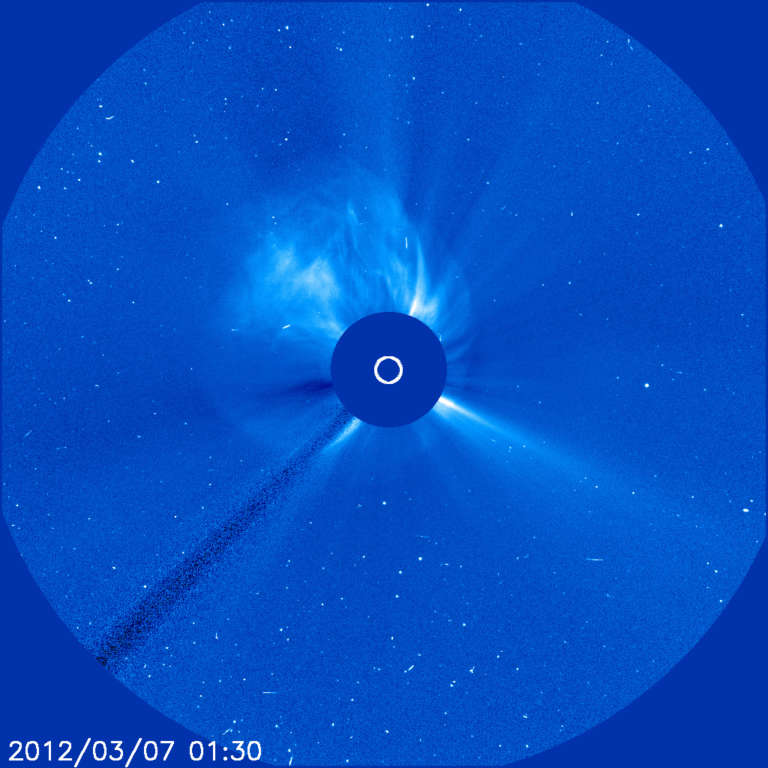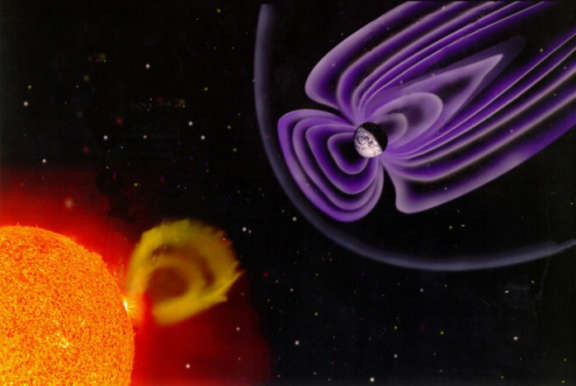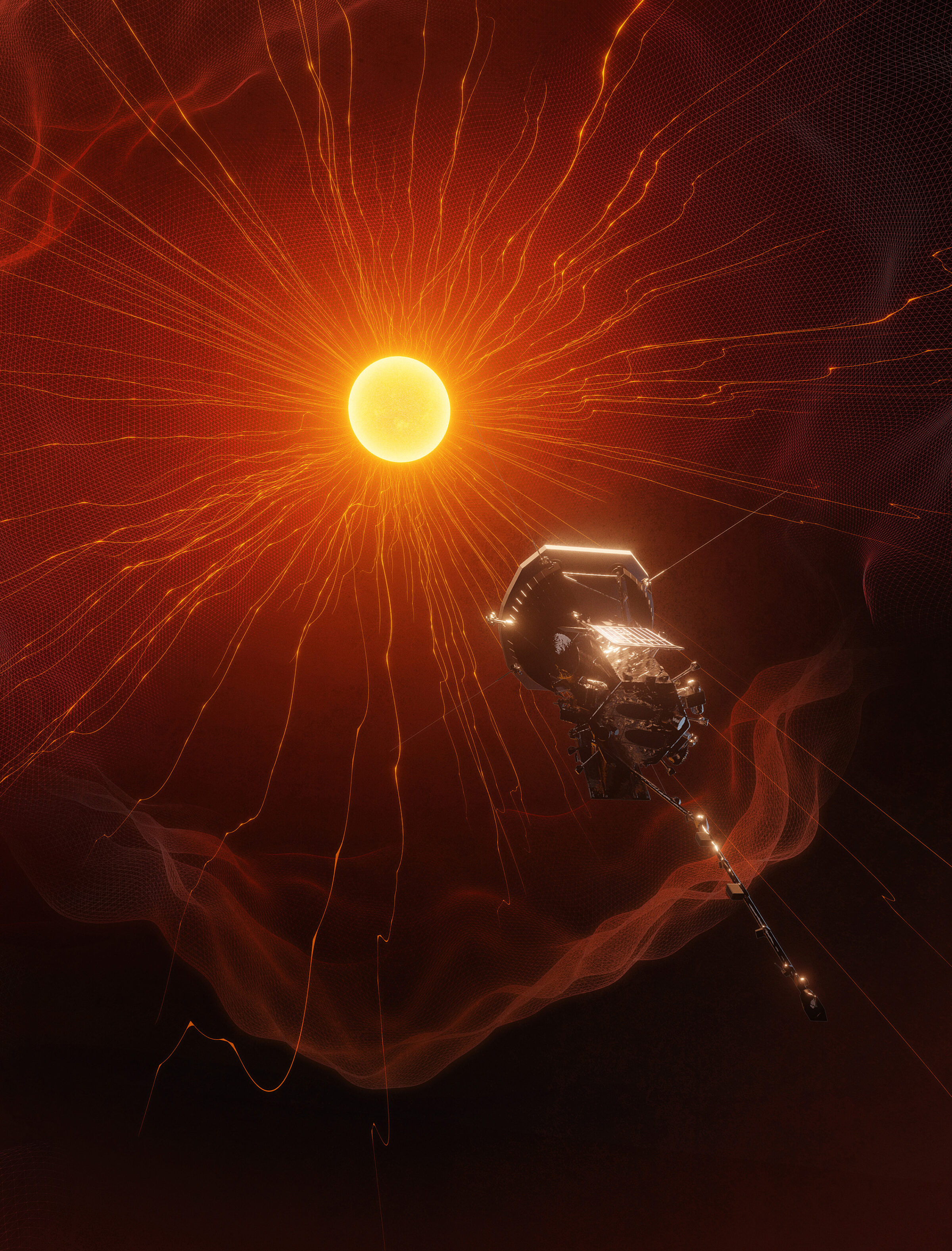Asa Stahl • Mar 26, 2024
Should you be worried about solar storms?
The danger of a major solar storm is now at its highest in over a decade. As the Sun reaches the peak of its activity cycle, the odds of such a storm hitting Earth rise along with its associated risks, including blackouts, disabled satellites, and damaged cell phones and GPS networks. In the most extreme scenarios, some power grids could be knocked out for weeks or even months.
But that is the worst case. With the right precautions, solar activity could be a net positive for humanity, as it constantly protects us against harmful radiation from beyond the Solar System. Whether we risk the dangers or reap the benefits of living with the Sun will come down to the same thing: our ability to predict and prepare for what our star is going to do next.
Solar flares, solar storms, and the danger to Earth
“The Sun will do what the Sun wants,” says Nour Rawafi, project scientist for NASA’s Parker Solar Probe mission and astrophysicist at the Johns Hopkins University Applied Physics Laboratory (APL), which built and operates the probe from Laurel, Maryland.
Quebec learned this lesson in 1989, when a solar storm knocked out the province’s power for nine hours. The U.S. military experienced it in 1972, when solar activity triggered dozens of mines floating off the coast of Vietnam. And almost the entire world witnessed it in 1859 when, for about a day, the aurora borealis glowed so bright that it could be seen as far south as Colombia. People in the U.S. read newspapers by the light in the sky. Gold miners woke up in the middle of the night, thinking it was morning, and started making breakfast.
The 1859 geomagnetic storm, now known as the Carrington Event, was the strongest in recorded history. It was caused when a wave of magnetized plasma launched from the Sun, traveling at over 2,000 kilometers per second (about 1,500 miles per second), and then hit Earth. The wave of plasma, called a coronal mass ejection (or CME), led Earth’s magnetic field to release terawatts of power in response.

The same thing could happen today. But predictions for this solar cycle vary greatly: some scientists have put the odds of a roughly Carrington-level storm at about 1%, while others have gone as high as around 25%. How likely is it that we’re actually hit by such a powerful solar storm?
“Honestly, we don’t know,” says Rawafi. He argues that doesn’t matter. Though we may be fine most of the time, it will only take one incident to change everything — and it is only a matter of time.
“There is no way around it,” he goes on. “We are living with the Sun.”
Experts have tried to imagine the impact. As the Earth’s magnetic field changes in response to a solar storm, it can cause huge currents in power lines that blow out transformers and compromise electrical grids. Studies of the United States alone have predicted that a major solar storm would leave tens of millions of people without power, some for weeks, months, or even years. The economic damage would be in the range of trillions of dollars.
According to Rawafi, these estimates don’t go far enough. The real impact is “beyond the scale of our comprehension,” he says. “It’s way, way beyond that.”
A huge solar storm would disable satellites, especially communications satellites in higher orbits. It would mess with GPS signals, which are used by everything from cell phone networks to power grids. Taken alongside wide-ranging blackouts, which would also knock out pumps essential to the water supply, a Carrington-like storm could simultaneously damage almost all major aspects of modern infrastructure: power, food, water, transportation, security, and communication. With that much impaired, it’s easy to imagine problems in different sectors magnifying each other — and that’s on a sunny day. What if the storm hit during winter, when people rely on the power grid to stave off potentially deadly cold?

A storm could also cripple the internet. Most of the digital traffic between continents is carried by undersea cables, which use components that might get fried by a big geomagnetic storm. That would limit the internet to mostly function within more local networks. Those, in turn, might be compromised by the storm in other ways.
The impact of a major solar storm would vary greatly around the world, depending on a region’s power grid, proximity to water, location relative to the Earth’s magnetic field, and even geology, which determines how good of a conductor the ground is. For a combination of these reasons, places like China, North America, and Australia may be more susceptible to blackouts than much of the rest of the world. The metropolitan corridor spanning Washington, D.C. and New York City has been described as particularly vulnerable.
Predicting solar storms
In the face of such potential disaster, our best hope is to learn more about the Sun-Earth system, monitor solar activity, and develop our ability to predict space weather. It’s like forecasting normal weather, Rawafi says: the more you understand the system, the better you can predict what it will do.
This is no easy task when it comes to our star. The Sun is complex and not yet well understood, and scientists must also get a better handle on how its emissions travel through space and affect Earth. Compared to forecasting the normal weather, Rawafi says our space weather predictions are about 50 years behind.
That’s why missions like the Parker Solar Probe — the first spacecraft ever to touch the Sun — are all the more important. Launched in 2018, Parker has already made several discoveries about how the Sun transports energy outward into space. In 2022, Parker even flew directly through a CME. The spacecraft’s data have helped scientists improve their ability to predict exactly when an event at the Sun will later reach Earth. Establishing that timing is important, Rawafi explains, because it’s an essential first step to an early warning system that would help avoid a worst-case scenario.

Yet he warns that our current projects are not enough. Parker is not designed to act as a full-time warning system, and it can only study the Sun from one angle at a time. Rawafi suggests a constellation of satellites around the Sun, almost like Starlink around Earth, in order to completely surveil the Sun and always be ready to relay warnings back to Earth.
“We have to start thinking big,” Rawafi says. “We have to be bold.”
The sunny side of space weather
Despite its destructive potential, solar activity is not just a matter of doom and gloom. We could owe it our very existence, as some studies have found that solar activity might have catalyzed the development of life on Earth. Ironically, solar activity also keeps us safe: emission from the Sun shields us from even deadlier radiation that comes from the galaxy at large.
This means that for future astronauts on voyages away from Earth’s magnetic field, times of heightened solar activity might actually be ideal. Since the Sun is a stronger buffer when it’s more active, astronauts would be safest from galactic harm when solar storms are most likely. That timing would put a mission more at risk of getting hit by a CME — but if we could monitor and predict solar weather, it might be possible to minimize local threats while protecting astronauts from galactic ones.
Protecting Earth from solar storms
Humanity has options. When the next big storm hits us, the aftermath could look very different depending on what we do today. We can design satellites to be more resistant to geomagnetic storms. We can harden our power grids, especially our transformers, like Quebec spent over $1 billion doing after its power outage. Though U.S. electrical transmission providers recently began this process, their precautions seem to be designed with weaker storms in mind, not Carrington-level events.
And, as Rawafi suggests, we can dedicate more resources to solar science. NOAA’s Space Weather Follow On – Lagrange 1 (SWFO-L1) mission and NASA’s Interstellar Mapping and Acceleration Probe (IMAP) will both monitor the Sun and provide data to help predict space weather. Both are set to launch in 2025.

Meanwhile, the Parker Solar Probe will make its closest approach to the Sun in late 2024. The NASA spacecraft will beat its own record for the fastest human-made object, reaching speeds of almost 700,000 kilometers per hour (435,000 miles per hour). Though Parker’s primary mission will end in 2025, Rawafi says the probe is in perfect health, “like we launched it yesterday.” His team hopes to keep it going for as long as they can.
After all, a mission like Parker is a rare opportunity. The data it collects will be crucial to efforts to understand our Sun, and they may ultimately help decide what impact the next big storm has on humanity.
“Its mission,” Rawafi says, “will serve generations to come.”
Support our core enterprises
Your support powers our mission to explore worlds, find life, and defend Earth. You make all the difference when you make a gift. Give today!
Donate

 Explore Worlds
Explore Worlds Find Life
Find Life Defend Earth
Defend Earth

